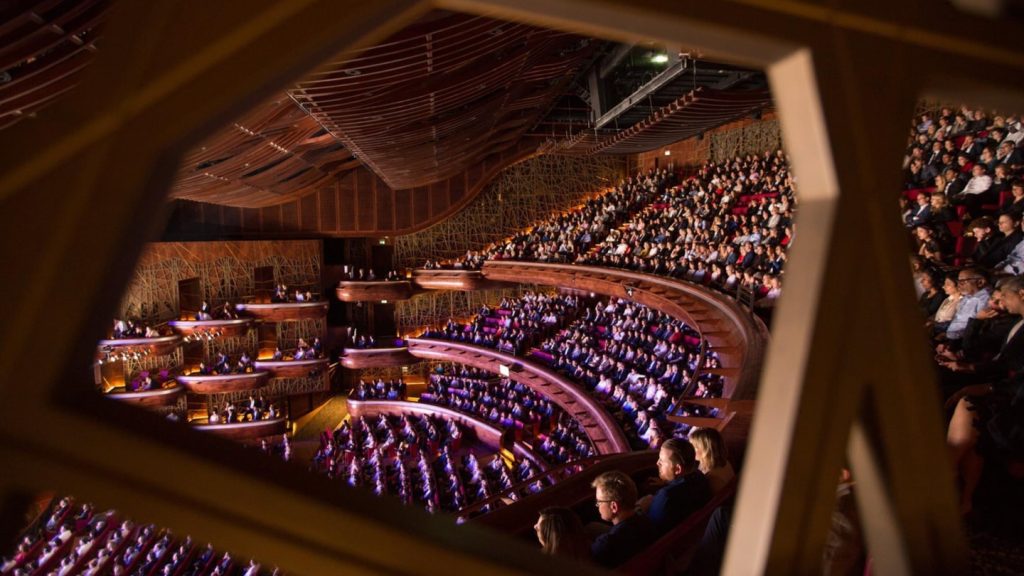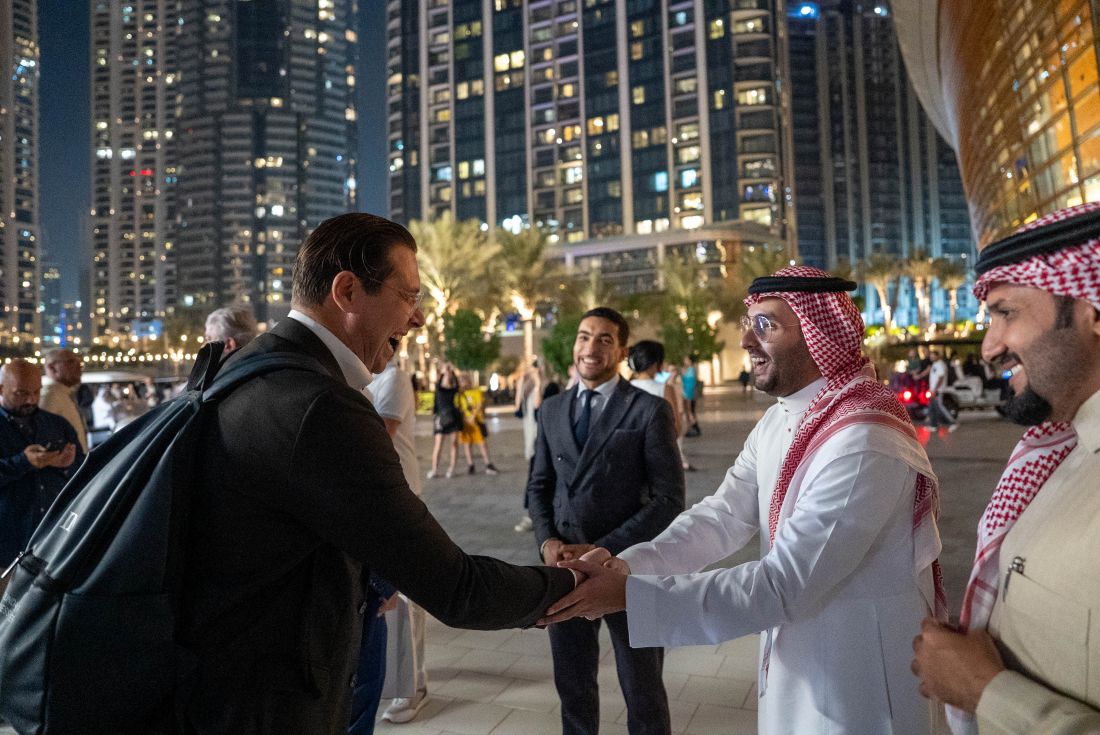– What role does the Ithra Museum play in promoting Islamic art and culture?
– Ithra wants to play a crucial role in shaping cultural narratives and promoting cross-cultural understanding, championing Islamic art as a living tradition that bridges past and present. Ithra celebrates the artistic legacy of the Arab world but also fosters the continued growth and vitality of the region’s art scene.
The Islamic Art Conference exemplifies Ithra’s commitment to showcasing Islamic art on a global stage, highlighting both the historic depth and evolving nature of these traditions. This event, alongside Ithra’s other initiatives, underscores the importance of preserving traditional craft skills while encouraging fresh perspectives and innovations that keep the art relevant to younger generations.
– How do you envision the future of Islamic art exhibitions at Ithra?
– Ithra has positioned itself at the forefront of Islamic art in the Kingdom, with a strong focus on developing and showcasing this rich cultural heritage through exceptional, in-house curated exhibitions. Our Islamic art collection has grown significantly, and these thoughtfully curated exhibitions reflect the diversity and depth of Islamic traditions, providing audiences with a fresh perspective on this vibrant heritage. Looking ahead, we aim to expand our impact through partnerships with local and global institutions and by participating in international events that strengthen Ithra’s contributions.
We’re dedicated to celebrating this living tradition in ways that inspire both regional and international audiences. As part of this commitment, Ithra Museum will be participating in the upcoming Islamic Art Biennale in Jeddah, allowing us to engage a broader audience and highlight the depth of our collection.
– What educational initiatives are being implemented alongside the conference to engage the local community?
– The conference includes a range of educational initiatives especially a series of daily workshops, and interactive sessions, where attendees can explore and develop their creativity while learning directly from both local and international artists.
Hands-on workshops are a central feature, offering immersive experiences in traditional Islamic art forms. Key workshops include the Geometric Pattern Experience, where participants learn foundational shapes in Islamic design, an Embroidery Workshop focused on intricate stitching techniques, and a Geometry of Mangour workshop, exploring the art of latticework central to Islamic architecture. Each workshop is thoughtfully crafted to deepen appreciation for these crafts and their cultural significance, creating a meaningful, interactive learning environment that supports artistic growth and sensory skill development for attendees of all ages.
– How does the conference facilitate cultural exchange and dialogue among participants from different backgrounds?
– The upcoming conference is a fantastic opportunity to facilitate cultural exchange and dialogue among participants from various backgrounds. We aim to bring together a diverse group of creative minds, including artisans, artists, scholars, and esteemed guests, all eager to share their unique perspectives and traditions.
Through engaging content, the conference encourages participants to delve into meaningful conversations about the evolving role of Islamic art in contemporary culture. By fostering an inclusive environment, we hope to inspire collaboration and innovation while celebrating the rich heritage of Islamic crafts. This gathering will not only highlight the significance of these traditions but also explore their relevance in today’s world, creating lasting connections among attendees that extend beyond the conference itself.
– What initiatives does Ithra have in place to support emerging Islamic artists?
– Ithra is dedicated to nurturing and supporting emerging Islamic artists through various initiatives. One of the key programs we promote is The Ithra Art Prize, which celebrates contemporary art and provides a platform for artists to showcase their work on a global stage. Launched in 2017, the Art Prize has been instrumental in funding and promoting Saudi and Saudi-based contemporary artists, initially in collaboration with Art Dubai for its first three editions.
In its fourth edition, the prize was unveiled alongside the Diriyah Biennale Foundation at the Kingdom’s inaugural biennale, significantly expanding its geographical reach to include established contemporary artists from across the 22 Arab countries. Recognized as one of the most prestigious art grants in the world, the Ithra Art Prize awards the winner $100,000 to bring their artistic proposal to fruition. The competition invites artists to submit proposals through an annual open call, with a global panel of experts—including artists, curators, academics, and art historians—selecting the top submission. The winning artwork is then created and unveiled at Ithra, where it becomes part of our permanent art collection. Through these initiatives, Ithra is not only fostering the development of original content but also ensuring that emerging Islamic artists gain recognition and support within the broader cultural landscape.
– Are there any particular artworks or installations featured in the conference that resonate with you personally?
– Absolutely! There are several artworks and installations featured in the conference that truly resonate with me. One of the aspects that resonated with me the most was witnessing the beauty of the commissioned works based on traditional crafts come to life in the gallery space. It’s been a true pleasure to work alongside master artisans who have created stunning installations that showcase their exceptional skills and creativity.
Seeing their joy and pride in being part of this space is incredibly rewarding. It highlights not only the artistry involved but also the importance of generational continuity in their practices. These artisans carry forward traditions that have been passed down through their families, and it’s inspiring to see how they blend these age-old techniques with contemporary themes. Their contributions enrich our understanding of Islamic art and culture, and I’m excited to share these experiences with our guests.
– What do you hope attendees will take away from their experience at the conference?
– I hope attendees will appreciate the importance of incorporating crafts into our daily lives as essential to our culture, beyond their artistic beauty. We want to create a welcoming space to explore new trends in Islamic arts and crafts while fostering cultural exchange and meaningful contributions to the arts landscape. By encouraging open dialogue, we aim to inspire participants to learn from master artisans. Their practices can offer valuable insights for our well-being and personal growth, guiding us toward more sustainable living while ensuring that Islamic art and culture thrive in today’s world.
Interview by Yekaterina Shailardanova



